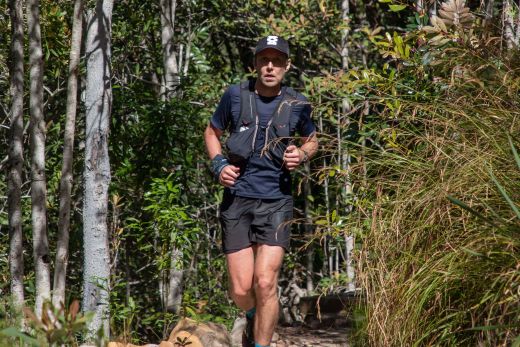It could be FOMO, or maybe you’re just looking for a new and fun way to get in shape. Regardless of your reasons, you’re considering giving trail running a shot, and you now want to know more about this fast-growing sport and why it continues to attract new participants in their thousands. Questions like ‘What’s with the weird socks?” and “Are all trail runners endurance masochists?” are well-founded. And you might find it difficult to get any straight answers from seasoned runners. Ask any ultra-runner why she runs long distances, and she might tell you that it’s about overcoming yourself and surpassing your self-imposed limitations – whatever that means. It’s best to leave these free spirits to their kale and spirulina smoothies, and to look for answers elsewhere. In this article I explain, in simple terms, why trail running is so popular, what it actually entails, and how to get started.
Why trail run?
Many say that we run because it satisfies some primal instinct and that we, like our ancestors, feel most alive when we have to call on our agility, strength and stamina to negotiate rugged terrain at speed. But modern humans run for a different reason to early man. Our ancestors almost always ran because they were lower down the food chain. It was a case of eat or be eaten. Modern man, on the other hand, runs because he enjoys it. Trail running gives him a break from the chaos of modern life and puts him back in nature, a source of calm for many busy urbanites.
Besides the psychological benefits of trail running, there are also many physical reasons to trail run. Firstly, it’s easier on the joints than road running. Trails are a lot less uniform than paved surfaces and so are less likely to cause a repetitive strain injury. Secondly, the varying terrain works a greater range of muscles and so creates a more athletic and balanced runner. And thirdly, trail running teaches greater coordination and balance, which can help condition you for other outdoor activities.
Trail running, cross country and fell running
Many new trail runners won’t want anything more than just get out onto some trails with their friends. But many others will eventually set their sights on a race. It’s at this point that new runners realise that there are three distinct disciplines that involve running on trails.
Cross country
Cross country events involve running several laps of a short course (usually between 1,750m and 2,000m) to make a total distance of 8 to 12 kilometers. It is both an individual sport and a team sport, since runners compete at an individual level and contribute points to their teams. Once an exclusively British sport, cross country is now practiced in dozens of other countries, usually in the autumn and winter months.
Fell running
Like cross country, fell running was developed in Britain, but there are some significant differences. While cross country races involve running across meadows, woodland, and open country, fell running involves slogging up a peak or even peaks. A fell is a mountain, and fell running usually entails long steep ascents and descents. Many races cross remote open terrain with no paths or markers, and navigation skills are a must (no marked course here). And unlike cross country races, there’s no standard format for these events.
Trail running
The terrain and distances in trail running are more varied than in either cross country or fell running, and courses can involve coastal trails, forest singletrack, and rugged mountain paths. That’s possibly the biggest part of trail running’s mass appeal – with courses ranging from short and gentle vineyard meanders to 100-mile mountain passages, there’s something for everyone. As with fell running, runners compete individually, and events are held year-round, hail, rain or shine.
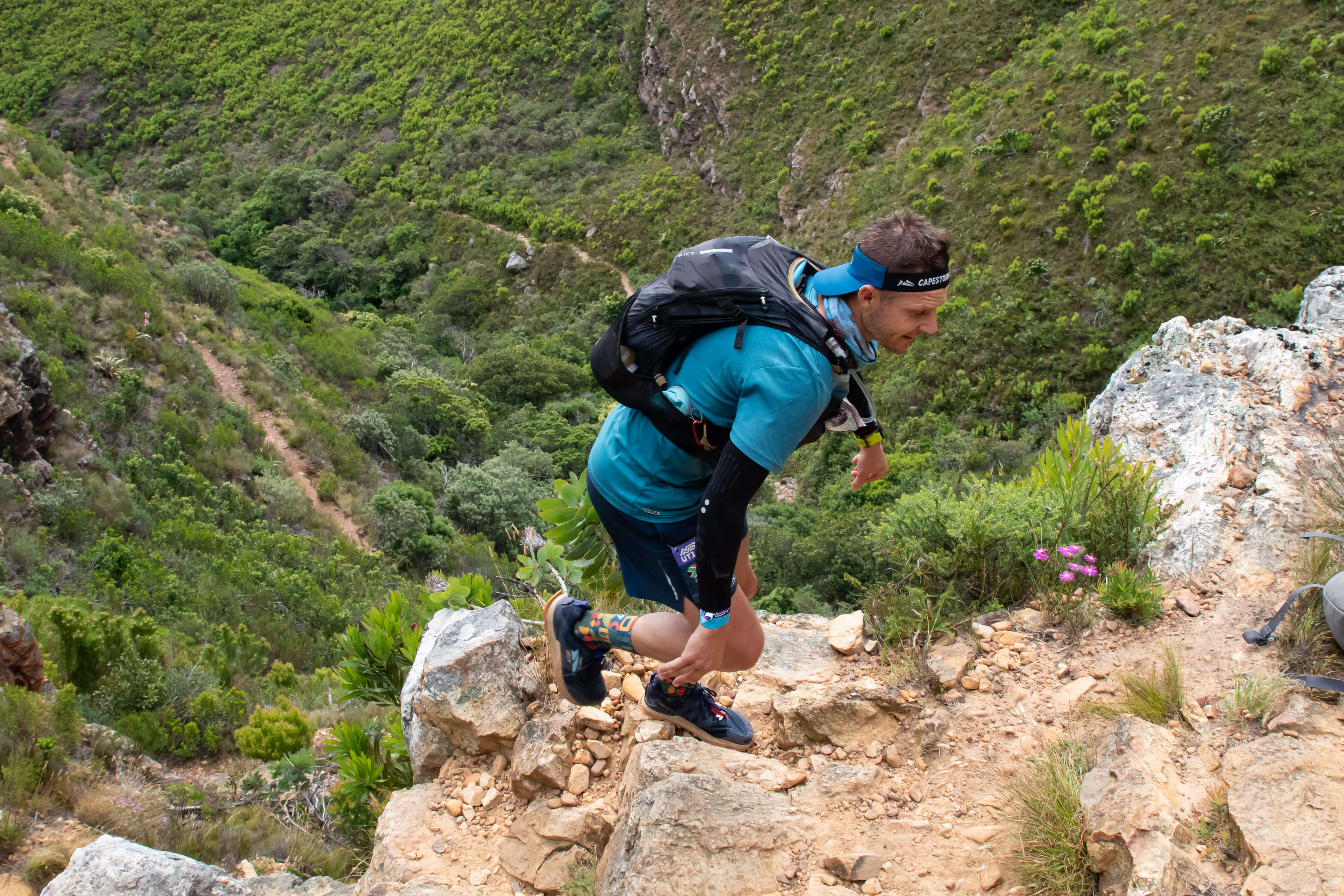
Trail running skills
Given the rugged nature and remote location of many trails, trails runners need skills very different to those of a road runner.
Picking a line
When you first venture out onto a trail, it will be instinctive to look at your feet. Don’t – you’ll develop an unconscious knack for remembering where your feet should land even when you’re not focussing on them. Rather scan the trail ahead (four or five feet) for obstacles. This way you can plot a course over and around rocks and roots that could trip you up or slow you down. This is an essential skill for keeping momentum on the trail.
Running technique
In trail running, it’s better to use a shorter stride than you would in road running. This will help you maintain balance on uneven terrain and will make it easier to vary the length of a single stride when you need to clear awkwardly positioned obstacles. Short strides also make it easier to maintain traction on steep technical descents. For a more complete explanation, see my blog article on trail running technique.
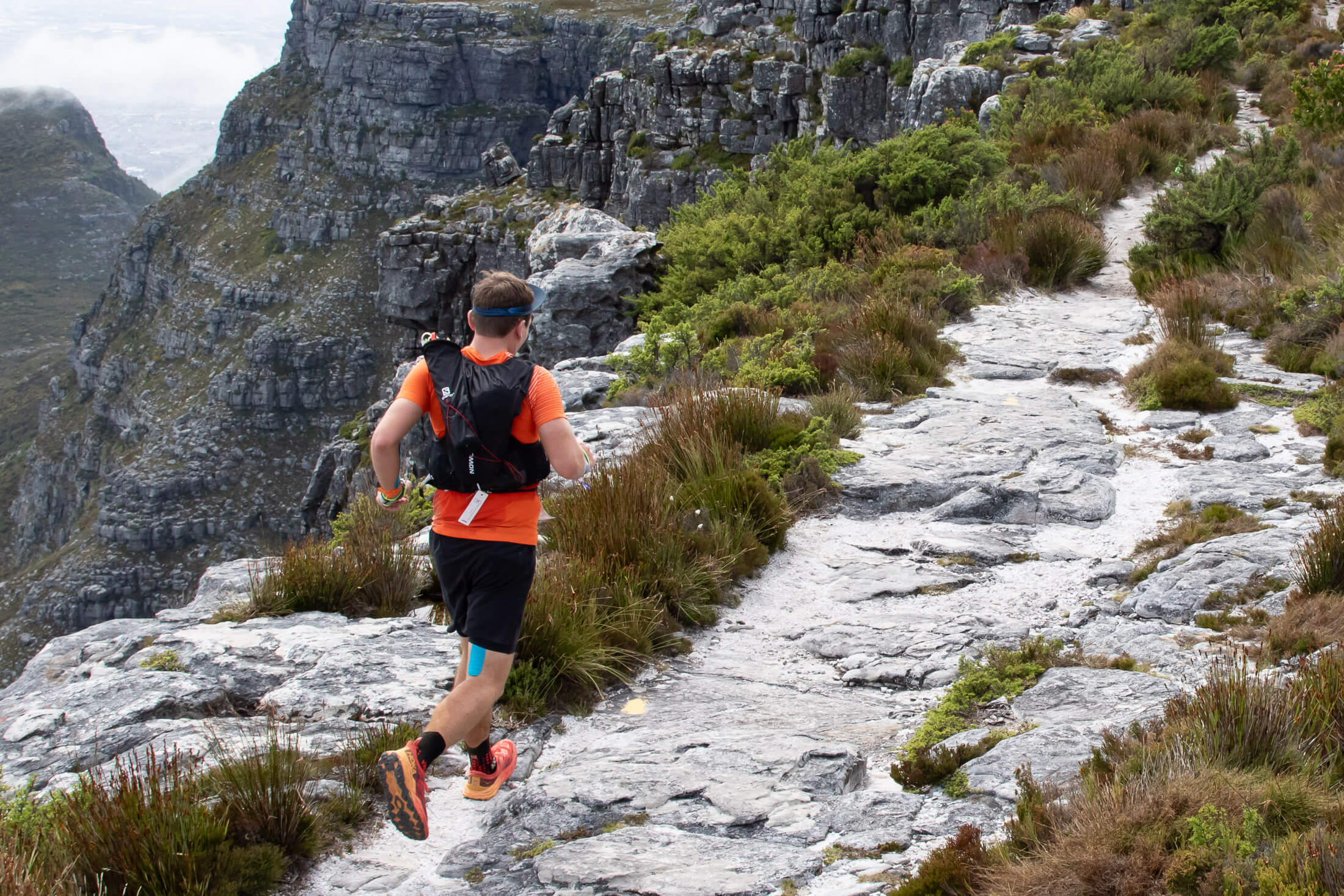
Self-sufficiency
As you progress from local trails and marked race courses to remote wilderness trails, you will need to acquire some skills to stay safe. These can be summed up in one word: self-sufficiency. You need to be prepared for everything that nature can throw at you. To start, you need to be able to anticipate your needs according to terrain and weather, and then pack accordingly. Water, snacks, extra layers, and navigational tools are just the basics. You can find a full list of things to pack in my blog article on trail running essentials.
Navigational skills
Trail runners competing in events usually have the benefit of a marked course, but runners heading out into the wilderness by themselves need to know how to navigate. There’s a wide range of electronic tools like GPS’s and apps like Gaia and Strava, which can make it easy to find the way. But batteries die, screens break, and, in the case of phones, cell signals fade. A well-prepared runner knows how to use a compass and map when technology fails.
Trail running gear
Trail running can involve the use of general purpose outdoor gear, but in this next section I’m going to focus on gear designed specifically for trail running.
Trail running shoes
Trail running shoes differ from road running shoes in several regards. The most obvious is that trail runners have large lugs to improve traction in mud, gravel and other slippery substrates. Secondly, they are designed to be more durable and offer greater protection from rocks, roots and other things you might stub your toes against. And thirdly, they’re designed to offer more support and stability on uneven terrain. For some reason trail runners are also more colourful than road running shoes, and it’s very easy to spot the trail runners in any store display.
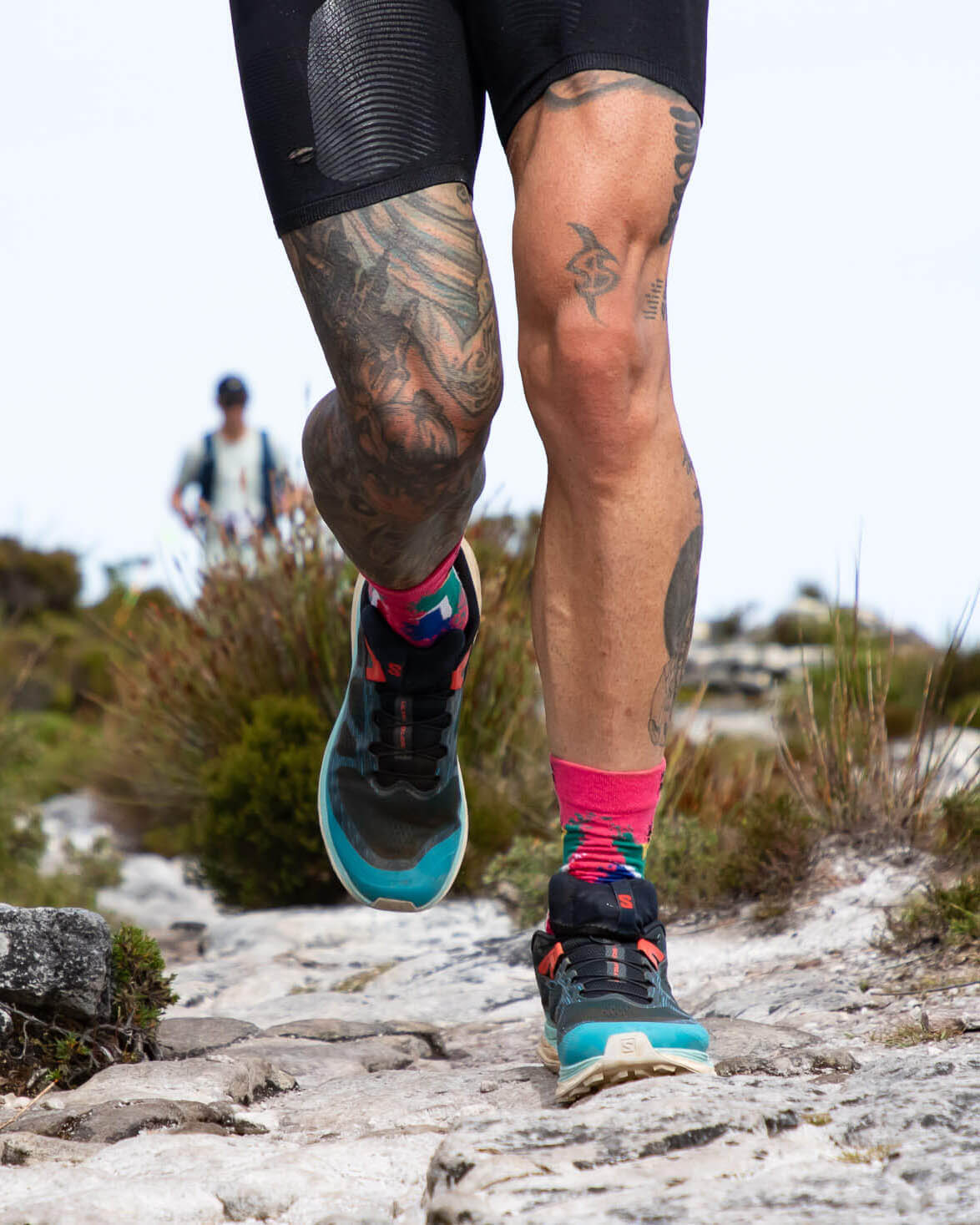
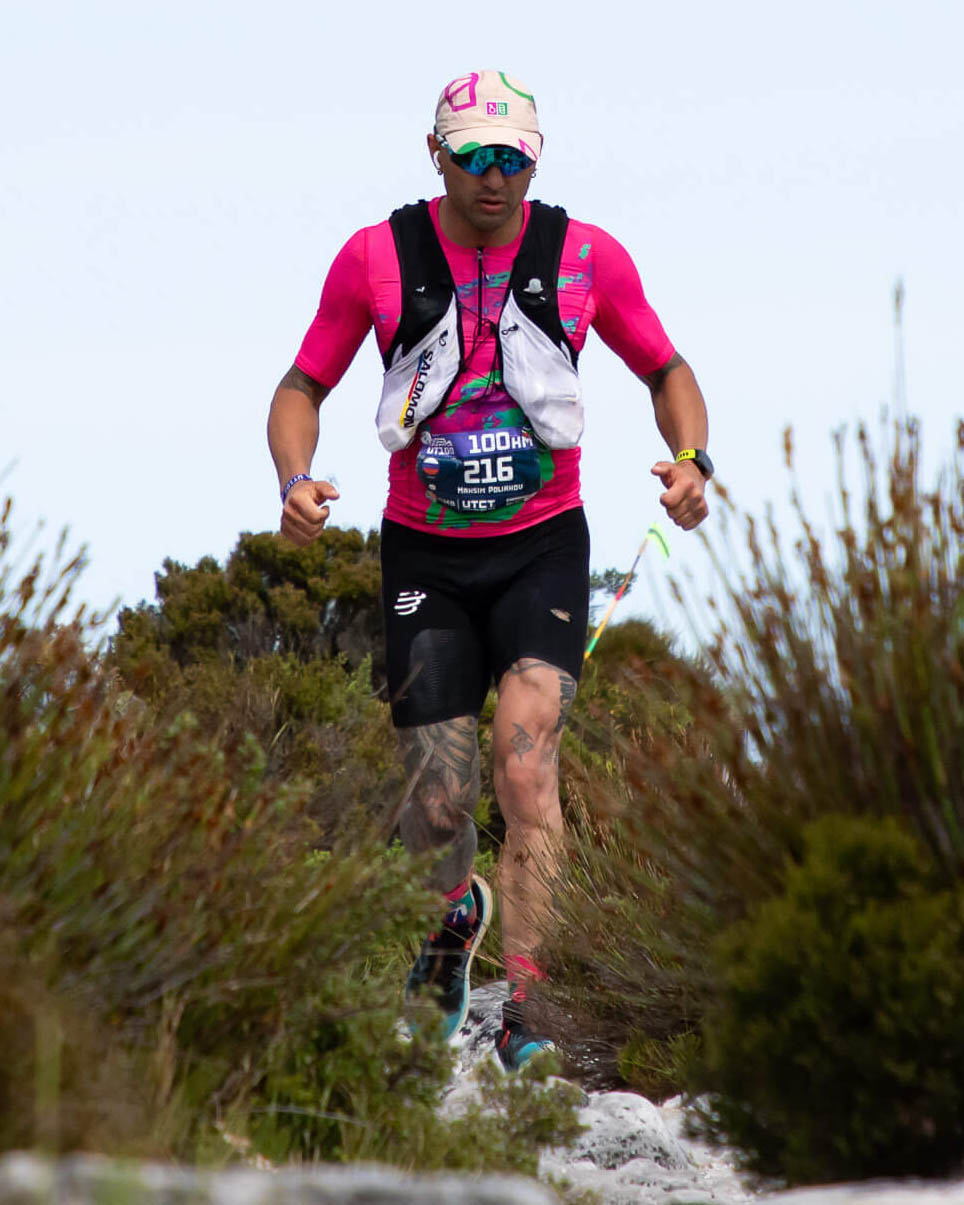
Hydration system
Water is essential on all but the shortest runs, and there are several different ways to carry H20: in a hydration pack or vest, a waistpack with water bottles, and a handheld water bottle. On shorter runs, a handheld water bottle or waistpack will suffice, but when you up the intensity and your water intake, you’ll need a hydration vest or a hydration pack. If you go with a hydration pack, look for a running-specific model with a narrow profile that allows your arms to swing freely. A pack also provides more room for extra clothing, food, first-aid kit and navigation tools, and so are also a good option for longer adventures.
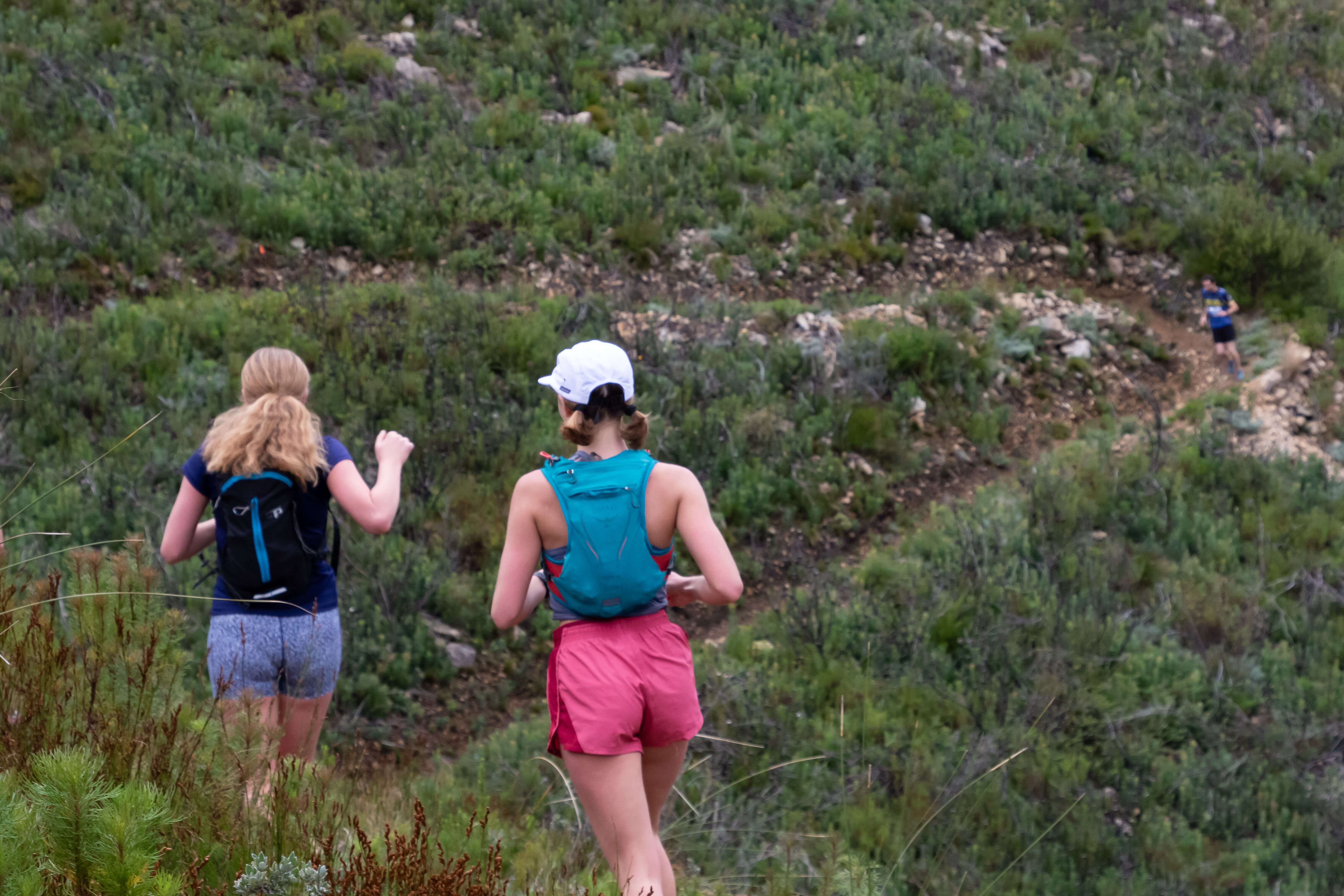
Clothing
Like hiking apparel, running wear should be made of moisture-wicking synthetics or merino wool rather than cotton (very slow drying), but running apparel should also allow for greater ventilation. Many running shirts have zippered necks, and some running jackets have vented underarms to stop things from getting too hot and sweaty. It’s also important that clothes do not restrict movement (including arm motion) or feature the kind of thick seams that will contribute to chafe. Socks, too, should be made of merino wool, and some runners won’t wear anything but knee-high compression socks (supposedly good for circulation).
How to get started
With a group
There are several benefits to starting your trail running career with a group. It’s safer; you’ll benefit from members’ knowledge of local trails; and you’ll meet other trail runners who might want to run socially but not necessarily in a group. More experienced members will generally also be willing to share their knowledge of training, race strategies, and trails. And if you’re single and looking, it’s a great way to meet people with similar interests.
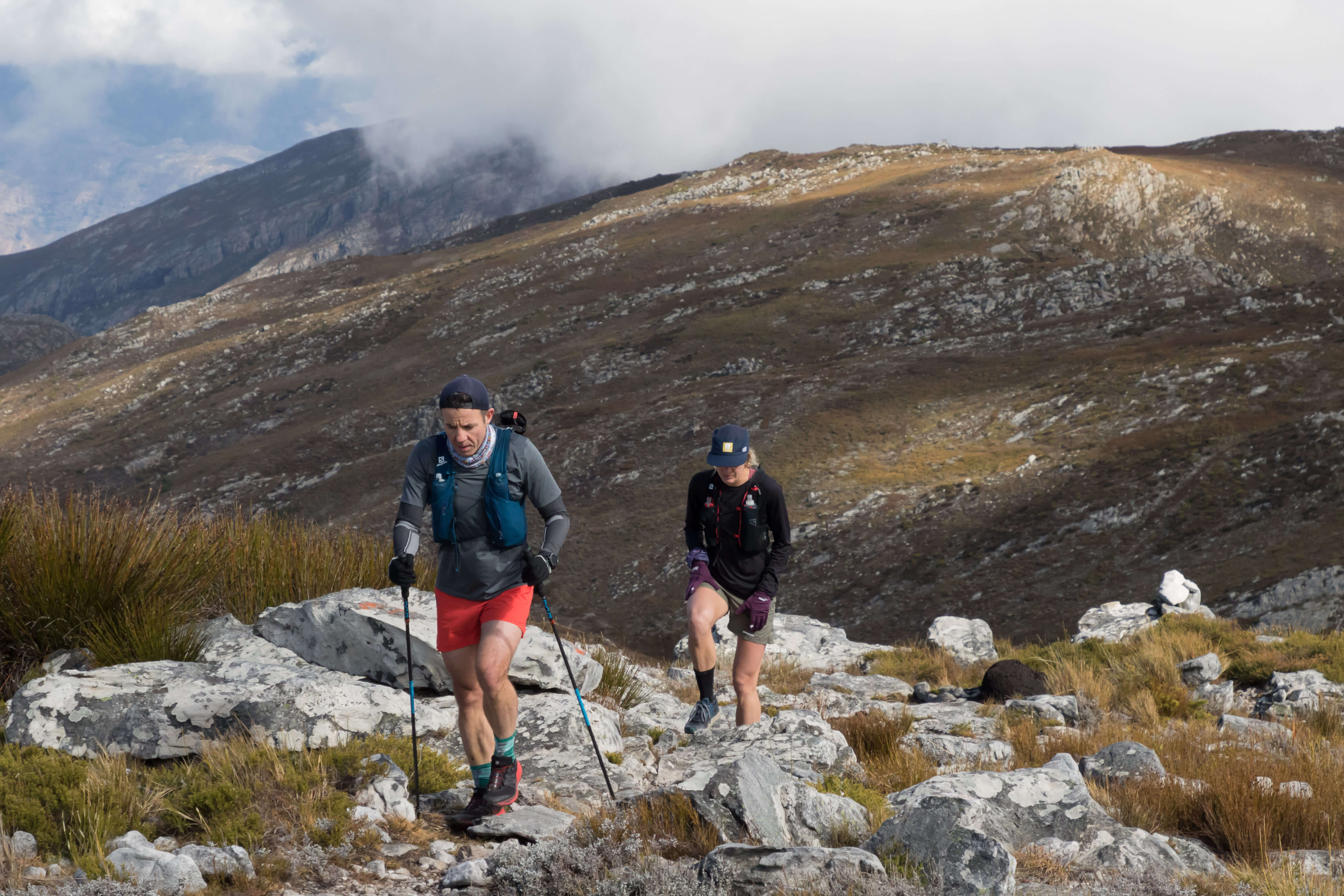
Solo
Familiarise yourself with the area by looking over a map and do some research on the possible risks in the area (weather, security, and navigational challenges should be considered). Ideally you’d find someone to run with. If you can’t, you should take extra precautions: only ever run on popular well-trafficked routes and always let someone know where you’re going and what time you should be expected back by.
Where to trail run
Finding local trails
No matter where you live, you will find trails worth running. Even if you live in an urban area, the chances are that you’re within a short drive of some green spaces. And by green, I don’t mean verdant but rather the green seen on Google maps. Other free trail-finding resources include Strava and Trail Run Project. Joining a trail running group or club is also a good way to get first hand knowledge of the local trails. Or you could pick up a trail running guidebook at an outdoor store.
A world of adventure
Almost all trail runners will, at some point in their careers, find themselves glued to a running magazine centrefold featuring some far away, pristine wilderness. In those seconds, a dream is born, and it’s not long before they’re putting other life plans on hold so that they can chase their goal. Most travelling runners will choose to compete in one of many world famous endurance events, but some adventurous souls will strike out alone in search of solitude in remote and unspoilt wilderness. To these people, places like the Andes, Rockies, Alps, and Himalayas have an incredible draw.
What makes the culture special?
Terrain aside, culture is one of the biggest differences between road running and trail running. The trail running vibe is a lot more fun and laid back than the performance-orientated road scene. While road racers are obsessing over cadence and heart race, trail runners are revelling in the experience – taking in the mountain scenery and enjoying the company of like minded people. And the camaraderie is real. Despite their very varied backgrounds, trail runners are quick to acknowledge kindred spirits.
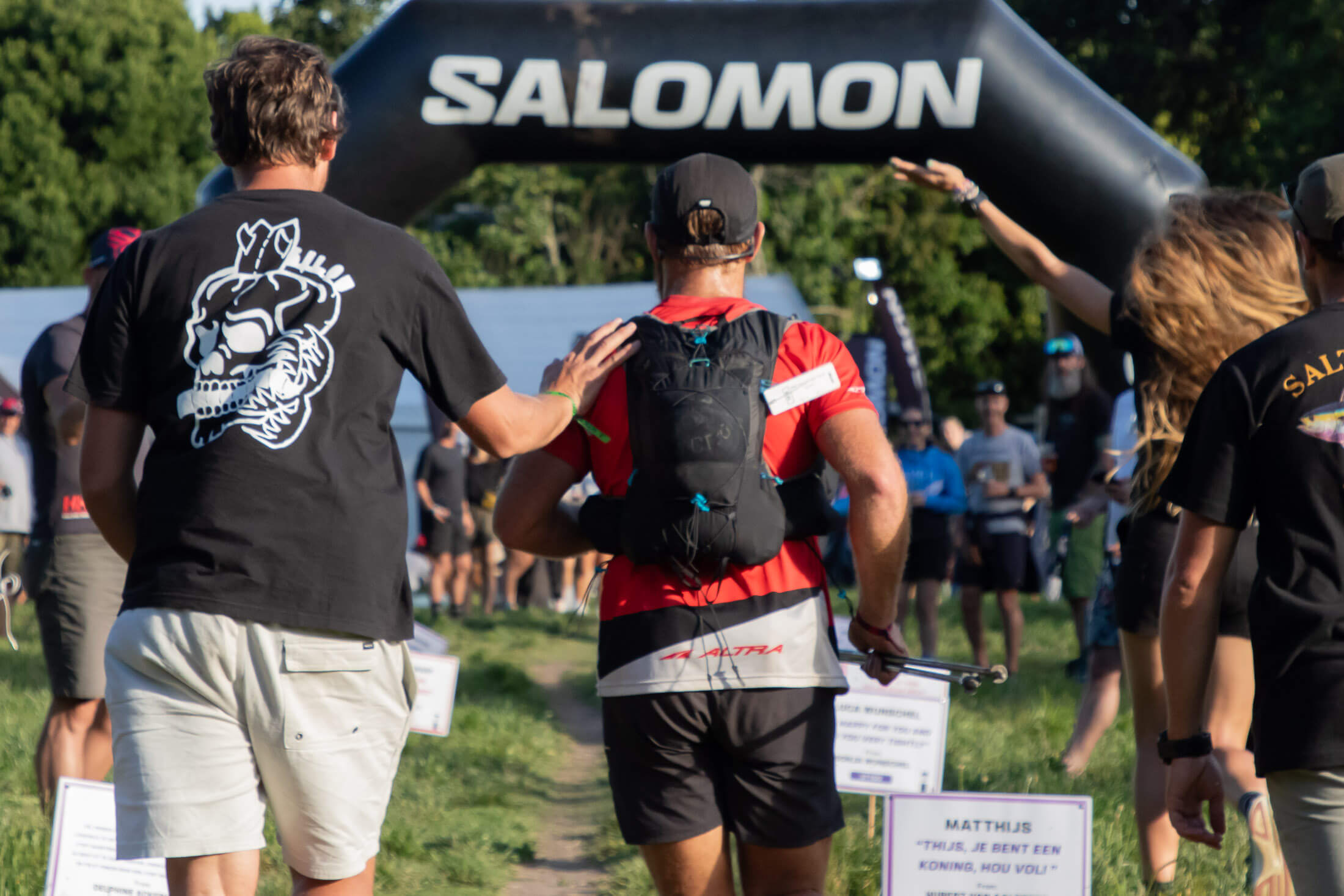
This sense of community might have something to do with the remoteness of trails and the pleasant surprise runners sometimes feel at a chance meeting with others, but then it must have as much to do with the recognition of a shared and strange obsession: “We both like this weird thing and so obviously have something in common”. This sense of community and camaraderie is so integral to the whole trail running experience that it’s standard practice to have a few beers straight after a race.
Get out there
The best way to get into trail running is find a group and get out and run. That said, if it’s more information that you’re after, this site has many more trail running articles filled with pointers, practical tips, and valuable insights.
